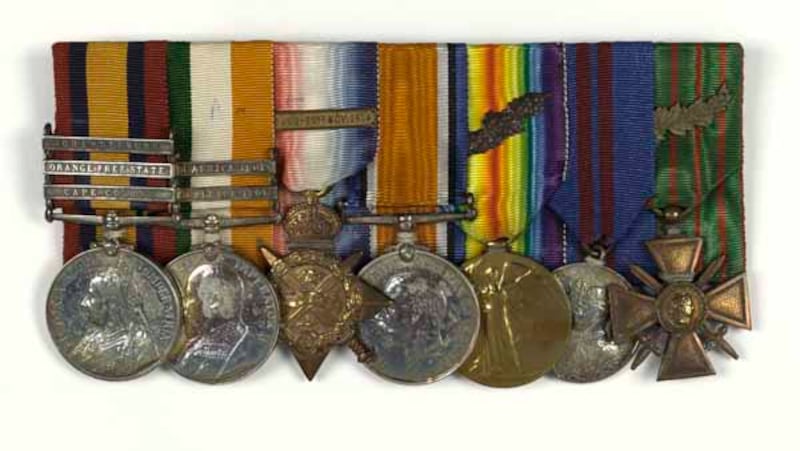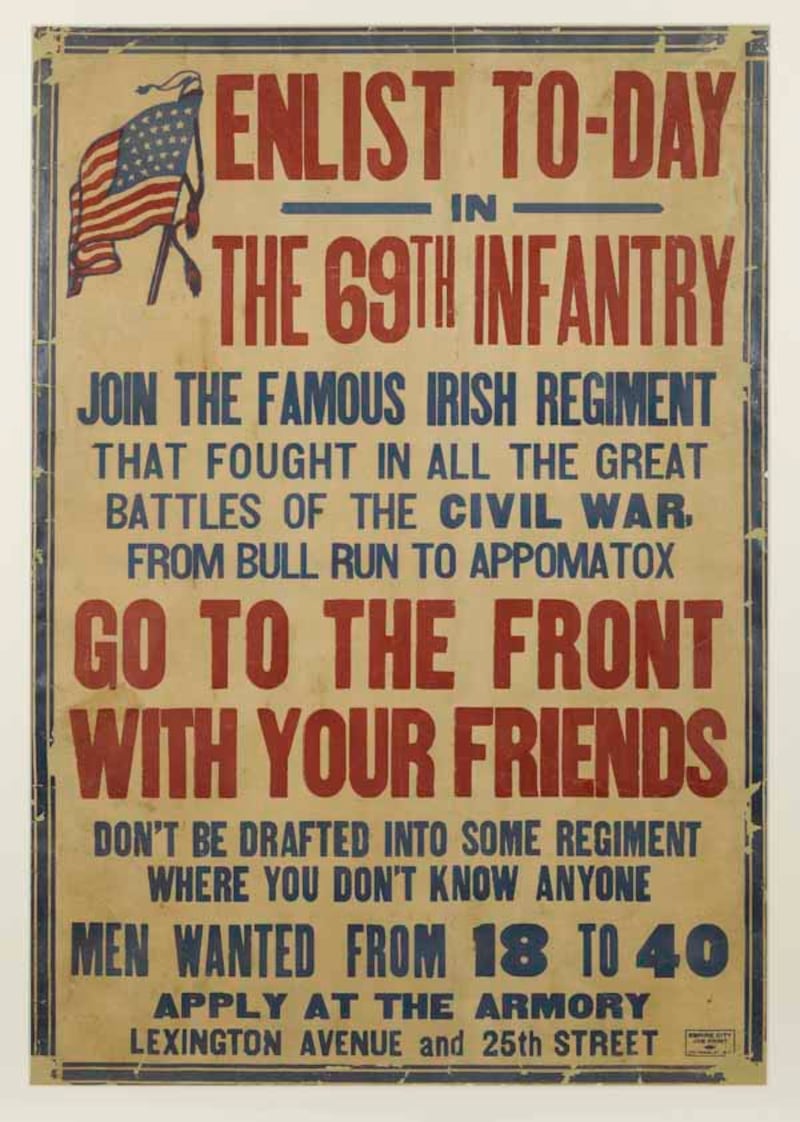The Soldiers & Chiefs exhibition at the National Museum Collins Barracks examines all aspects of Irish military history from 1550 to the present day. In particular we focus on the individual stories of soldiers and their families how they experienced conflict.
In relation to the first World War this is discussed in the Decade of Centenaries gallery which looks at this crucial decade of Irish history chronologically from 1914-1924, from the first World War to the Rising, the War of Independence and the Civil War. More recently the Recovered Voices exhibition and exhibition book examined the Irish soldier role in the first War from 1914 to 1916.
This year we open the Battle of Messines exhibition which surveys what happened to the Irish soldier in 1917 on the Western Front.
In 1917, two Irish Divisions fought side-by-side, in victory and then in defeat. In June 1917, the 36th (Ulster) and 16th (Irish) Divisions benefited from careful preparation and good luck to eject well-entrenched German forces from the important Messines Ridge. The preliminary artillery bombardment was unprecedented in its intensity - three shells exploded on the German lines every second for 12 days.

Two months later, the same two divisions suffered terrible casualties in assaulting concrete fortifications amid the mud of an unusually wet autumn. Despite warnings from his officers, the army commander, Irishman Hubert Gough, insisted the attacks go ahead. An observer later wrote: "The two Irish divisions were broken to bits, and their brigadiers called it murder".
Through most of its brief existence the 16th (Irish) Division was commanded by William Hickie of Co Tipperary. He had served in India and Egypt and fought in South Africa in 1899 and later France before being appointed commander of the 16th Division in December 1915.
The 16th Division was seen as an Irish nationalist division and Hickie, a Catholic and home ruler, was a popular commander. He tried to encourage his troops by awarding a special certificate to deserving soldiers. In the summer of 1917 two officers that Hickie particularly liked, Major Willie Redmond and Fr Willie Doyle, were killed and this followed on from the death of the popular Capt Tom Kettle in 1916. He recommended Fr Doyle for Victoria Cross to be added to the Military Medal that he had already won.

As for the 16th Division, by late 1917 after the loss of so many soldiers there were fewer Irish replacements and the gaps were filled with English conscripts, while Hickie himself was replaced in February 1918 due to ill health. He eventually retired from the army in 1921 becoming involved in the British Legion and serving as a senator in Irish Free State Senate.
For the Irish soldier on the western front the large number of deaths meant many soldiers were rapidly promoted to officers. Samuel Morgan was a professional soldier, a sergeant in the Royal Irish Rifles. When the first World War broke out, his military experience saw him promoted to the rank of second lieutenant and kept in Ireland until 1917, when he joined the Royal Irish Rifles on the Western Front.
On July 19th Samuel sent a souvenir French bank note to his son Leo, back in Ireland. Three weeks later he was shot through the head and killed, leaving Leo Morgan without a father.
Jack Hunt had served in the Boer War as a soldier of the Royal Dublin Fusiliers and retired from the army in 1913. By 1917 he was officer serving as major in the 9th Battalion Royal Dublin Fusiliers and had already won the Military Medal. He survived the war later joining the Irish Free State army.
2017 also marks the 100th anniversary of the United States entering the war on 6th April 1917, and by the end of the year 500,000 American soldiers had landed in Europe. One of those units was 69th Regiment whose regimental motto was "Gentle When Stroked, Fierce When Provoked" and had earned the nickname the Fighting Irish during the US Civil War (1861-65).
Under the command of Col “Wild Bill” Donovan, the 69th were among the first American troops to arrive on the Western Front, and they took part in fierce fighting, losing 644 men by the end of the war.
Other Irish regiments, such as the 101st US Infantry (formerly the 9th Massachusetts Regiment of the Irish Brigade) also took part in the conflict. Col Donovan went on to win the Medal of Honour as did two other members of the 69th Regiment. Instituted in 1862 the medals are for members of the US Armed Forces who have distinguished themselves "conspicuously by gallantry and intrepidity at the risk of his life above and beyond duty while engaged in an action against an enemy".
The most famous winner of the medal in the first World War was Daniel Joseph Daly a Marine born in Glen Cove, New York. He is best remembered for his famous battle cry at the attack on Belleau Wood in June 1918, when he moved his unit forward in the face of the withering German machine gun fire shouting “Come on . . .Do you want to live forever?”
These stories and more can be seen in the National Museum of Ireland, Collins Barracks, Dublin from May 25th.
















